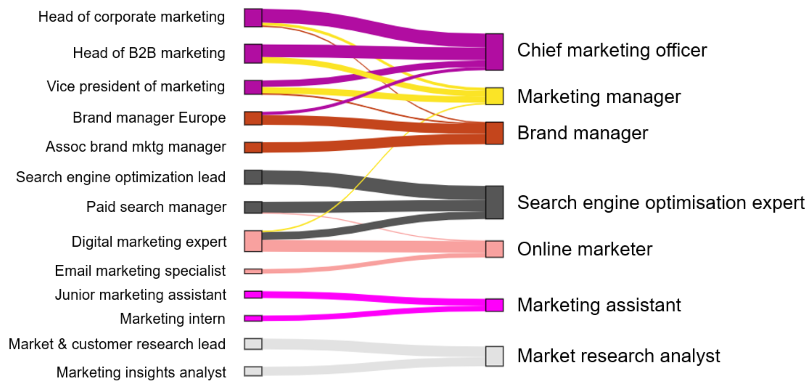In the previous blog post, we showed the potential of using artificial intelligence (AI) to gain additional insights for existing occupations and occupation groups of the ESCO taxonomy. In this article, we will focus on the challenges related to the update of ESCO.
The challenge
How to decide if new occupation concepts should be added? To which extent are the new occupations similar to the existing ones? To which occupation group do they belong? These are only a few of the questions the European Commission must address in order to keep the ESCO classification aligned with innovations and relevant changes in the labour market.
These challenges are related to the fundamental problem of mapping textual descriptions of, potentially new, occupations to the existing ESCO occupations hierarchy - which is not a straightforward task.
Terminology used in various data sources is usually not perfectly aligned with the ESCO terminology. For example, the job title 'senior android developer' appears frequently in CVs, user profiles or job vacancies, but there is no exact mapping available to the existing ESCO occupation ‘mobile application developer’. In addition, ESCO does not include in its PTs and NPTs elements such as ‘senior’, ‘fixed-term contract’, ‘part-time’ or other jargon that is typically found in CVs or job vacancies.
Connecting real-world job titles to ESCO occupations
The Commission is building machine learning models to suggest potential matches to ESCO occupation concepts based on input such as job titles and occupation labels.
A first version of the model is developed based on labour market expert input, Member States’ national taxonomies, Qualification Data Register qualifications and job vacancies.
When analysing a real-world job title, the model suggests the best matches with ESCO occupations. The interactive table below offers some examples. By selecting one of the proposed inputs, the top 5 ESCO suggestions of the model can be inspected together with the corresponding match score. To better represent real-world data, we include some less straightforward cases.
In general, the normalisation problem as described above is further complicated by the dynamics of the labour market: new job titles for existing occupations come into fashion and new occupations might emerge. The result is that it is challenging to keep the taxonomy closely aligned. In order to assist in this process, the previously described model was used to generate mapping suggestions for such cases.
Investigating new alternative labels from real-world data
Using this model in combination with data extracted from labour market expert input, national occupation taxonomies, Europass user profiles and job vacancies, provides a powerful approach to assist in enriching the ESCO taxonomy with additional occupations or alternative terms. Frequently observed job titles that are not part of ESCO are good candidates for further investigation in this process.
The following figure links marketing-related job titles extracted from external sources with ESCO occupations. The thickness of the line represents the strength of the association as computed from the model output.

The approach is also helpful to investigate whether the ESCO preferred term and alternative labels adequately represent the European labour market terminological heterogeneity.
This article explained how ESCO is leveraging artificial intelligence through occupation mapping to enrich the occupations pillar. Occupation normalisation and mapping new job titles for existing/new occupations is pivotal in this process. More detailed information is available in the report below. The next article will focus on the importance of going one step further than just job titles.
Learn more:

Technical Report
The Technical Report provides more information on this topic.
